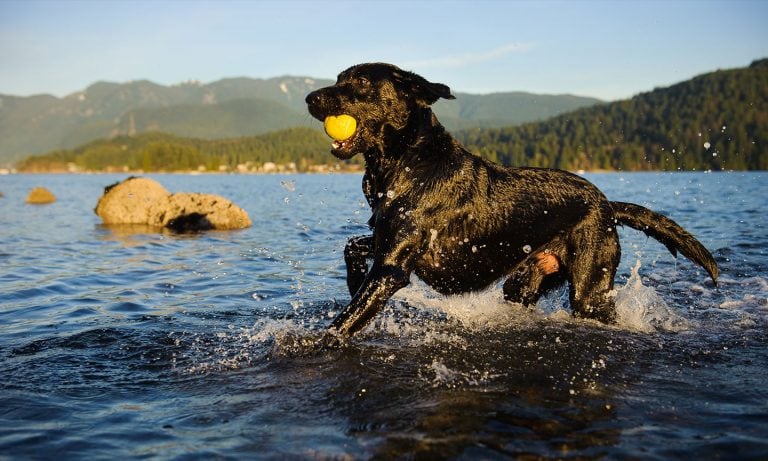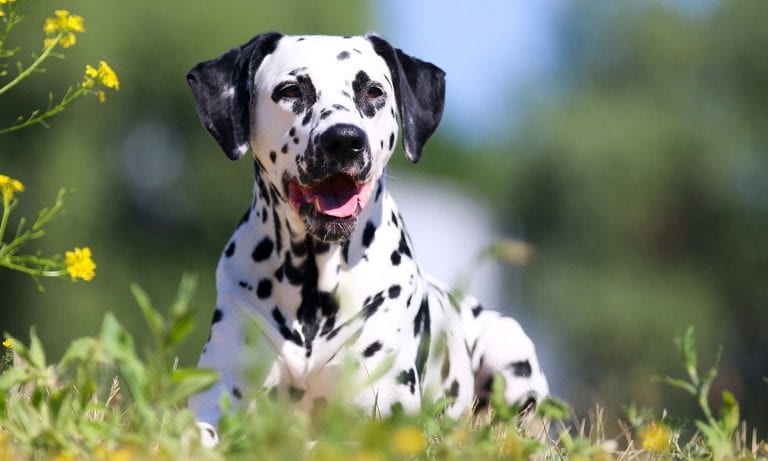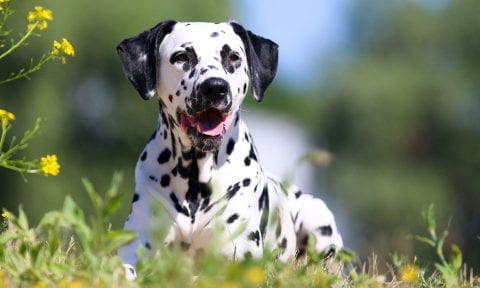Labrador Retriever vs Dalmatian

Breed Snapshot
Best For
The Labrador Retriever is one of the most popular dog breeds in America, known for their friendliness, intelligence and outgoing nature. These high-energy, athletic dogs require ample exercise and thrive in active households.
Labrador Retriever Temperament
Cheerful and animated, this large dog breed has stamina and energy to spare, able to keep up with your family and all your activities. You’ll want to funnel that energy into positive outlets, like outdoor activities and training. And thanks to their high intelligence, learning commands and tricks com...
Cheerful and animated, this large dog breed has stamina and energy to spare, able to keep up with your family and all your activities. You’ll want to funnel that energy into positive outlets, like outdoor activities and training. And thanks to their high intelligence, learning commands and tricks come relativity easy for them. Labrador dogs love having a job to do and excel at things like agility courses and, just like their name implies, retrieving items. In fact, their superior intelligence is why they often make great assistance dogs, working as therapy or service animals.
A people-pleaser, Labrador Retrievers have a pleasant personality and love interacting with humans. Get ready to be showered with lots of affection! They also easily make friends with dogs and other animals, including cats, although not all cats are as excited to meet them as they are—a Lab’s large size and high energy level can be a bit intimidating. Slow and controlled introductions to other family pets will help make the transition go smoothly. Considering the staying power of the Labrador dog breed’s popularity, it’s a safe bet your Lab will fit right in with the all the loved ones you choose to introduce into their life.
While they’re generally good-natured, like any dog breed, Labs may develop aggressive tendencies if they don’t receive proper training or have experienced abuse. Addressing any biting issues early on, providing proper socialization when they are puppies (aka safely exposing them to lots of new people, places and things) and working with a professional dog trainer can help avoid behavioral issues when they get older.
Labrador Retriever Traits

Breed Snapshot
Best For
With their distinctive spotted coat and playful personality, the energetic Dalmatian makes a charming family pet. They'll thrive with active pet parents who can keep up with their stamina, so if you're a runner, hiker...
With their distinctive spotted coat and playful personality, the energetic Dalmatian makes a charming family pet. They'll thrive with active pet parents who can keep up with their stamina, so if you're a runner, hiker or simply have access to a big outdoor space, this just might be your dog.
Dalmatian Temperament
An outgoing personality and a curious mind are a big part of a Dalmatian’s temperament. With a smart and friendly demeanor, the Dalmatian breed rates highly as a pup who’s a good pick for kids. Fortunately, biting isn’t a common problem with this pet, though early and...
An outgoing personality and a curious mind are a big part of a Dalmatian’s temperament. With a smart and friendly demeanor, the Dalmatian breed rates highly as a pup who’s a good pick for kids. Fortunately, biting isn’t a common problem with this pet, though early and consistent training is still recommended. A Dal may show wariness toward strangers; they were bred to guard and protect animals (namely horses), so teaching this canine from puppyhood to become used to new people, places and things is ideal.
The Dalmatian breed is quite competent and will pick up on the various commands and cues in obedience class as they love to learn and play. And if lots of exercise is added to the mix, you’ll allow your Dal to work to their full potential and use their deep energy reserves. Remember—a tired dog is a happy dog!
Dalmatians won’t be happy, however, if you leave them to play by themselves in the backyard. These active pups need human companionship and want to be active with you. Be sure you include them in all your fun.
Other important Dalmatian qualities include a playful nature and the ability to get along with cats and other dogs in the home. But because they’re so high energy, space to run and roam is important. A Dalmatian dog is best served in a home with access to outdoor space, a yard or large dog run where they can frolic.
Dalmatian intelligence is apparent as this dog’s backstory is one of extensive service. Bred to trot alongside horse-drawn carriages, they’ve worked closely with firefighters, marched in parades and even taken a turn in the spotlight as a circus dog. The Dalmatian is truly one of a kind.




